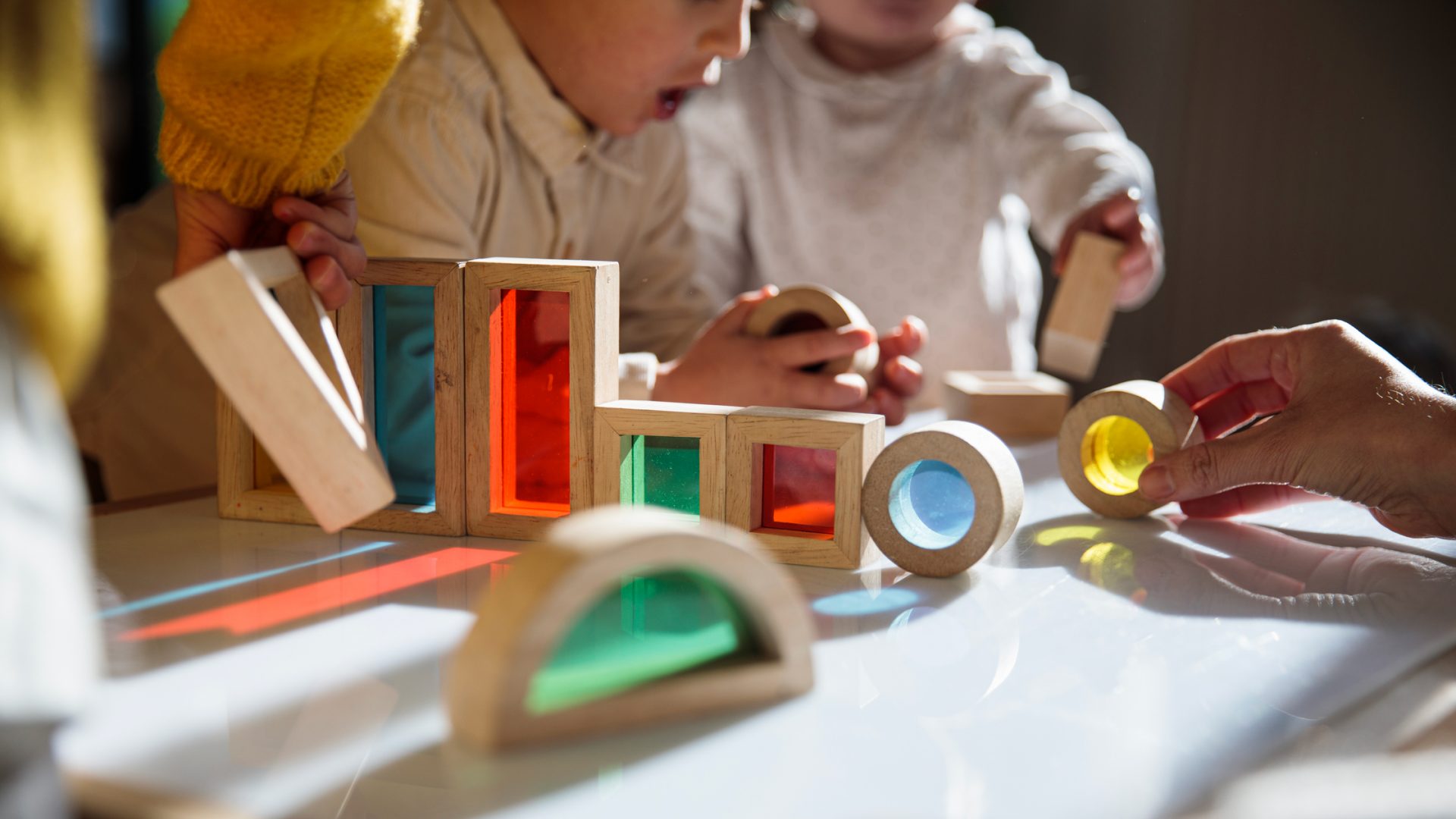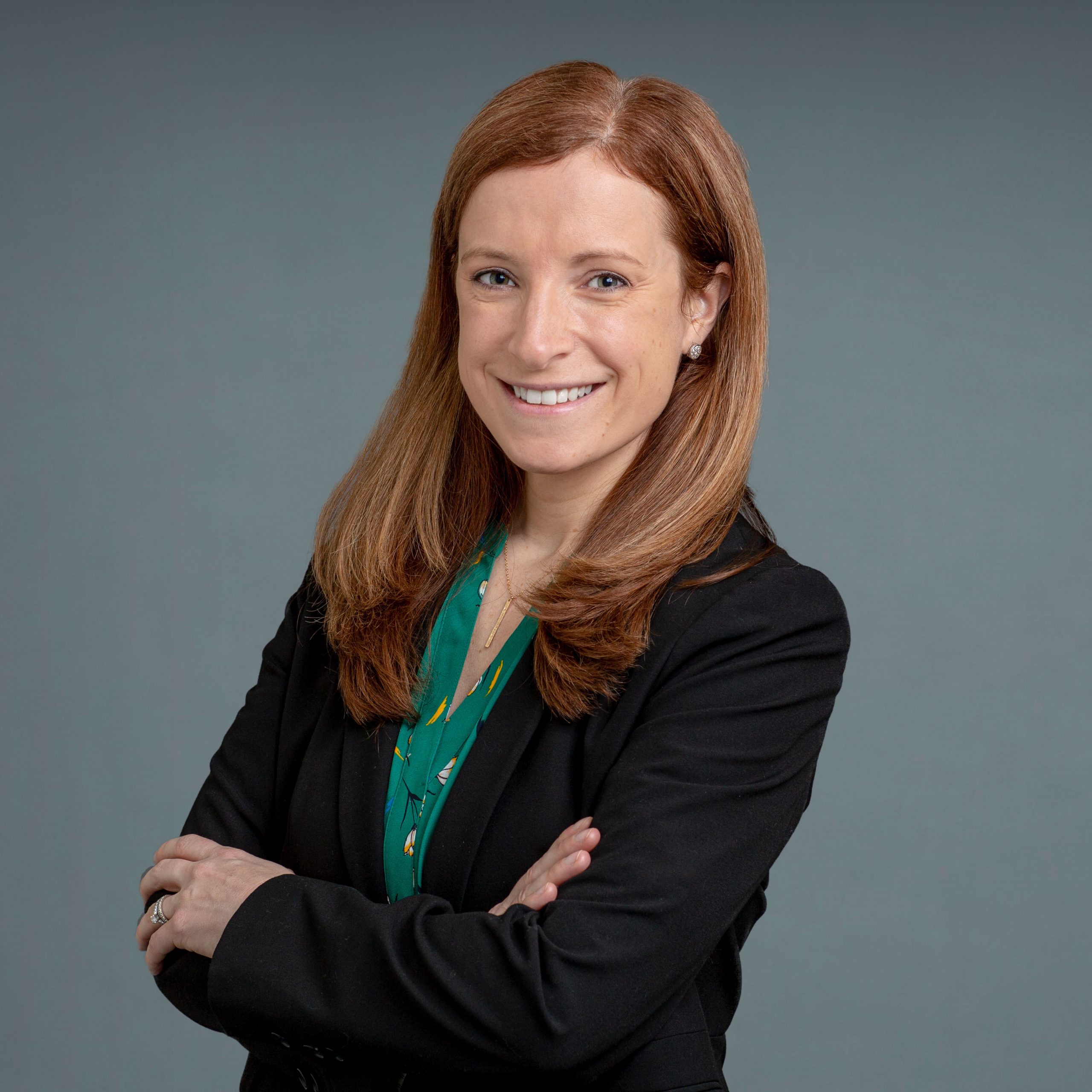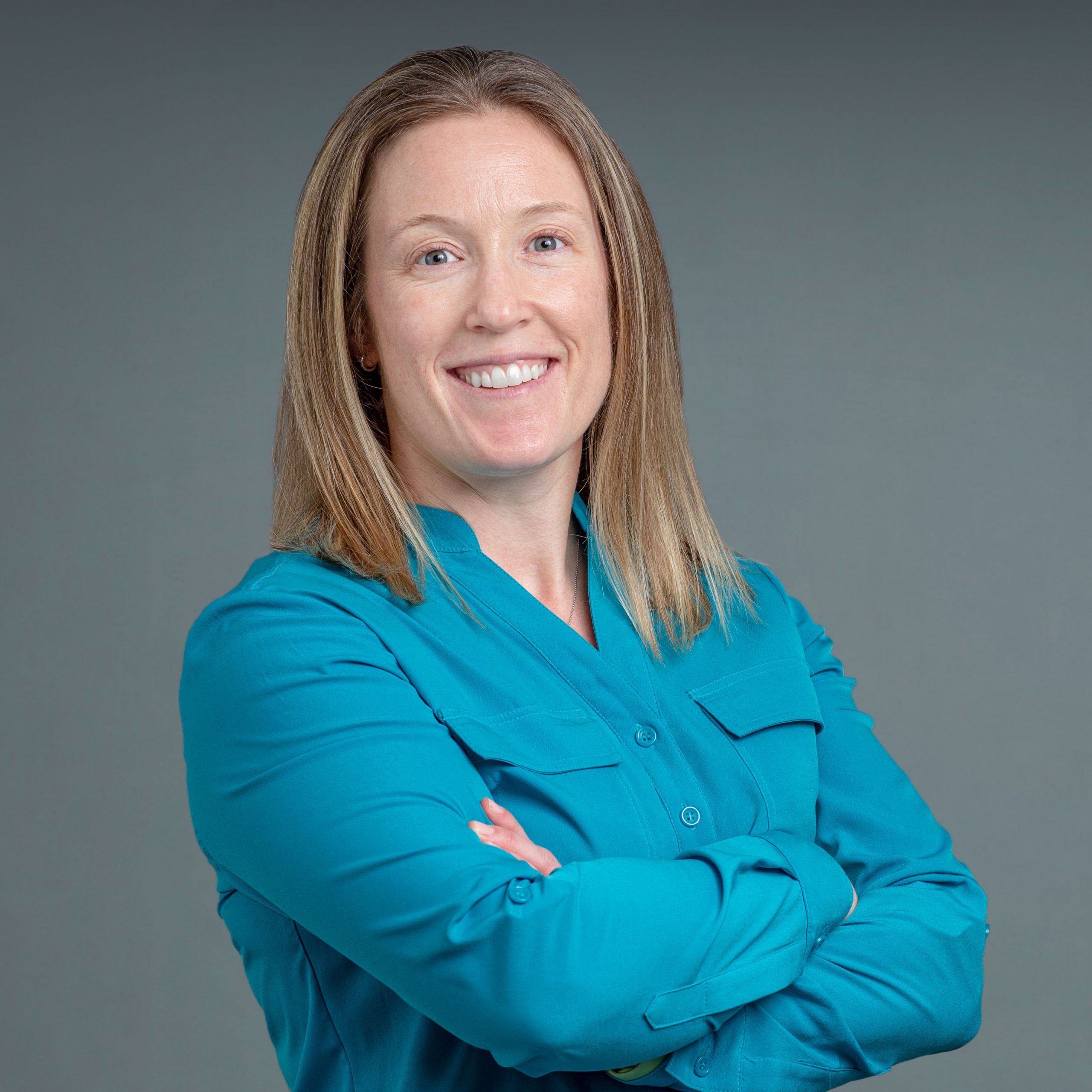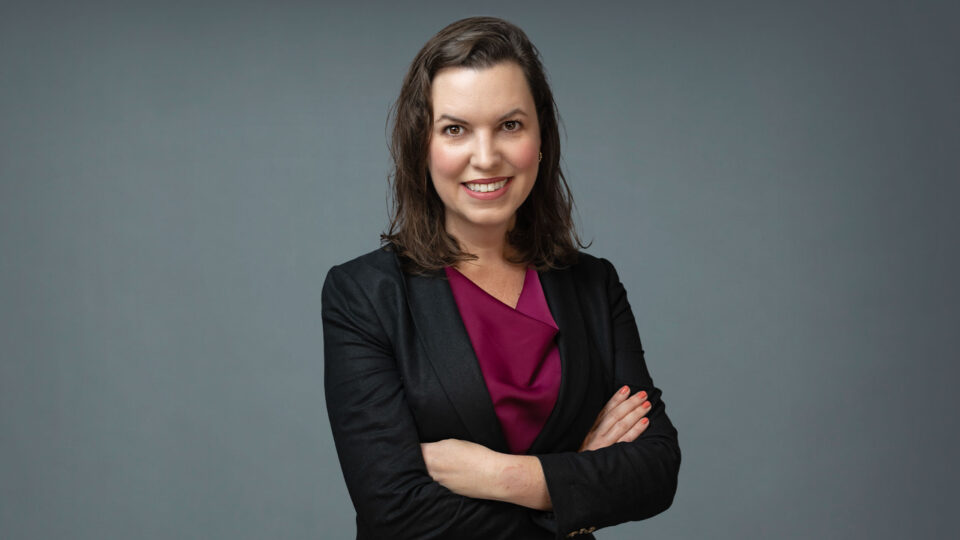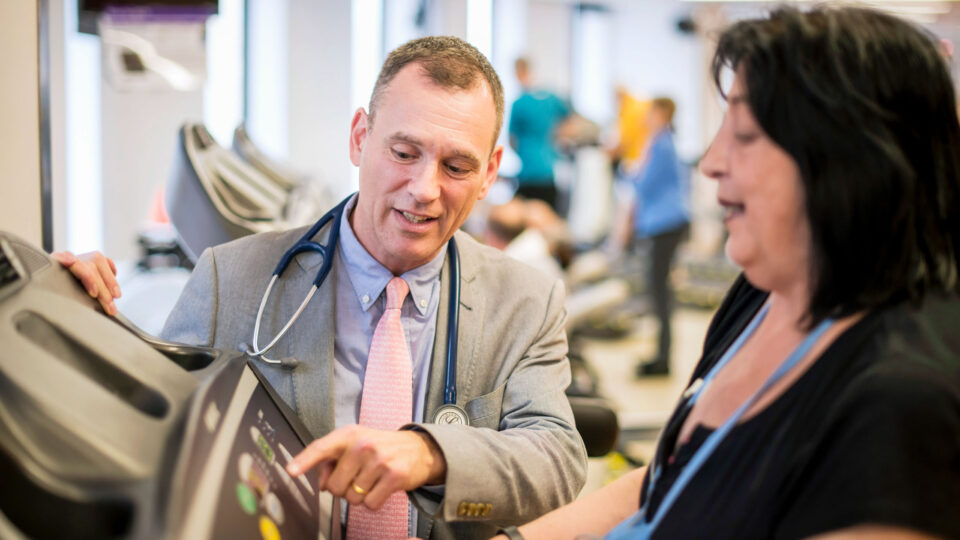The patient was born at 22 weeks and 5 days of gestation, weighing barely a pound and hovering at the cusp of viability. Prior to arriving at NYU Langone Health, he spent six weeks in the neonatal intensive care unit (NICU) at another hospital, where he battled several complications of extreme prematurity—including chronic lung disease, bilateral retinopathy, and a grade 3 intraventricular hemorrhage.
Like many babies who survive such difficult beginnings, he was left with profound developmental delays. After his release from the NICU, in the summer of 2020, he was referred to a local hospital for feeding therapy. His disabilities also entitled him to state-funded early intervention services, but the COVID-19 pandemic had brought the system to a standstill.
“In cases where brain injury is a factor, it’s crucial to start treatment as soon as possible. This enables care teams to take advantage of neuroplasticity to maximize recovery and developmental progress.”
Megan Conklin, PT, DPT
“In cases where brain injury is a factor, it’s crucial to start treatment as soon as possible. This enables care teams to take advantage of neuroplasticity to maximize recovery and developmental progress,” says Megan Conklin, PT, DPT, associate director of pediatric therapy services at NYU Langone. “This baby was clearly not getting the help he needed.”
Shortly before the child’s first birthday, the patient was referred to Pediatric Rehabilitation Services at Rusk Rehabilitation. There, a multidisciplinary team of specialists launched a program targeting his impairments in strength, posture, range of motion, balance, endurance, communication, feeding, swallowing, and cognitive skills.
It would continue for the next two years.
A Long, Hard Climb
When the patient entered treatment, in early 2021, he was 11 months old; his developmental age, accounting for his preterm delivery, was 7 months. His functional abilities, however, lagged much farther behind. On the Rossetti Infant-Toddler Language Scale, his verbal skills were in the range of 0 to 3 months, and on the Peabody Developmental Motor Scales-2 test, he scored well below the fifth percentile.
“He had difficulty with the most basic skills, like raising his head while lying on his belly,” recalls Allison U. Lam, PT, DPT, his primary physical therapist.
In twice-weekly sessions, Dr. Lam and her colleagues set out to improve the child’s strength, coordination, and awareness of his environment.
“We began with exercises addressing his overall weakness, such as picking him up in ways that facilitated activation of his belly muscles,” Dr. Lam explains. “As he got stronger, we worked on sitting and crawling.”
“We passed information back and forth. If one of us was working on a skill, the other team would incorporate that focus into their session.”
Allison U. Lam, PT, DPT
The physical and occupational therapy teams were in constant communication. “We passed information back and forth,” Dr. Lam says, “so that if one of us was working on a skill—say, trying to get him to engage with toys, or to use both hands for tasks—the other team would incorporate that focus into their session.”
In November 2021, the patient started aquatic therapy to further strengthen his core muscles. Within a few weeks, he could pull himself up to a standing position.
Once he could remain upright for prolonged periods, Dr. Lam determined that he could benefit from orthotics and referred him to pediatric physiatry, for comprehensive care led by Patricia T. Tan, MD, medical director for pediatric physical medicine and rehabilitation services at Rusk Rehabilitation. The physical therapy and physiatry teams collaborated to prescribe medical devices such as orthotics and assistive devices that helped get him crawling—and then walking—for increasing distances.
“Our team performs comprehensive evaluations of the high-risk newborns, addressing concerns ranging from visual or hearing impairment to spasticity, muscle weakness, and gait abnormalities,” Dr. P. Tan says.
Speech–Language Pathology
At the same time, speech–language pathologists, led by Tina M. Tan, CCC-SLP, focused on improving the patient’s feeding, swallowing, and communication skills. Initially fed by a gastrostomy tube (G tube), he underwent a swallowing study to determine which foods and liquids he could safely eat and drink.
Ongoing feeding therapy helped him develop the oral motor and swallowing skills he needed to ingest spoon-fed baby foods, chew solid foods, and drink from a cup and straw.
By 29 months, he had acquired the communication skills of a typical 12- to 15-month-old—communicating with gestures, single words, and occasional two-word combinations; and following simple, context-related directives.
The patient’s parents, meanwhile, were assigned to continue such lessons at home, a responsibility they embraced enthusiastically. NYU Langone’s social work and care management teams helped the couple, whose primary language was not English, navigate the intricacies of the healthcare and educational systems.
The Power of a Team Approach
As his third birthday approached, the patient underwent neurocognitive, behavioral, and physical testing to assess his readiness for preschool.
Although his gross motor skills remained significantly delayed, he’d made remarkable progress. He could stand from the floor without assistance, ambulate independently across flat surfaces, and step over 2-inch obstacles. He could even navigate stairs, with close supervision.
“Everyone saw this little boy as a whole person, rather than just focusing on their specific area of expertise. That’s what allowed him to really flourish.”
Allison U. Lam, PT, DPT
The patient had also demonstrated significant improvements in feeding and was eating solid foods and drinking from a straw. He was able to reduce his dependency on tube-feeding, taking in most of his needed nutrition by mouth.
In speech, reasoning, and other neurocognitive areas, his scores ranged from below average to low average. Strikingly, however, he exhibited 83 percent mastery of numbers, 90 percent mastery of colors, and 100 percent mastery of letters.
It was time to take another giant step. In September 2023, the patient enrolled in New York City’s 3-K pre-kindergarten program, where he continues to thrive.
“To me, it seems miraculous that he was able to gain the skills necessary to participate in school,” Dr. Lam says. “I credit our team approach. Everyone saw this little boy as a whole person, rather than just focusing on their specific area of expertise. That’s what allowed him to really flourish.”


